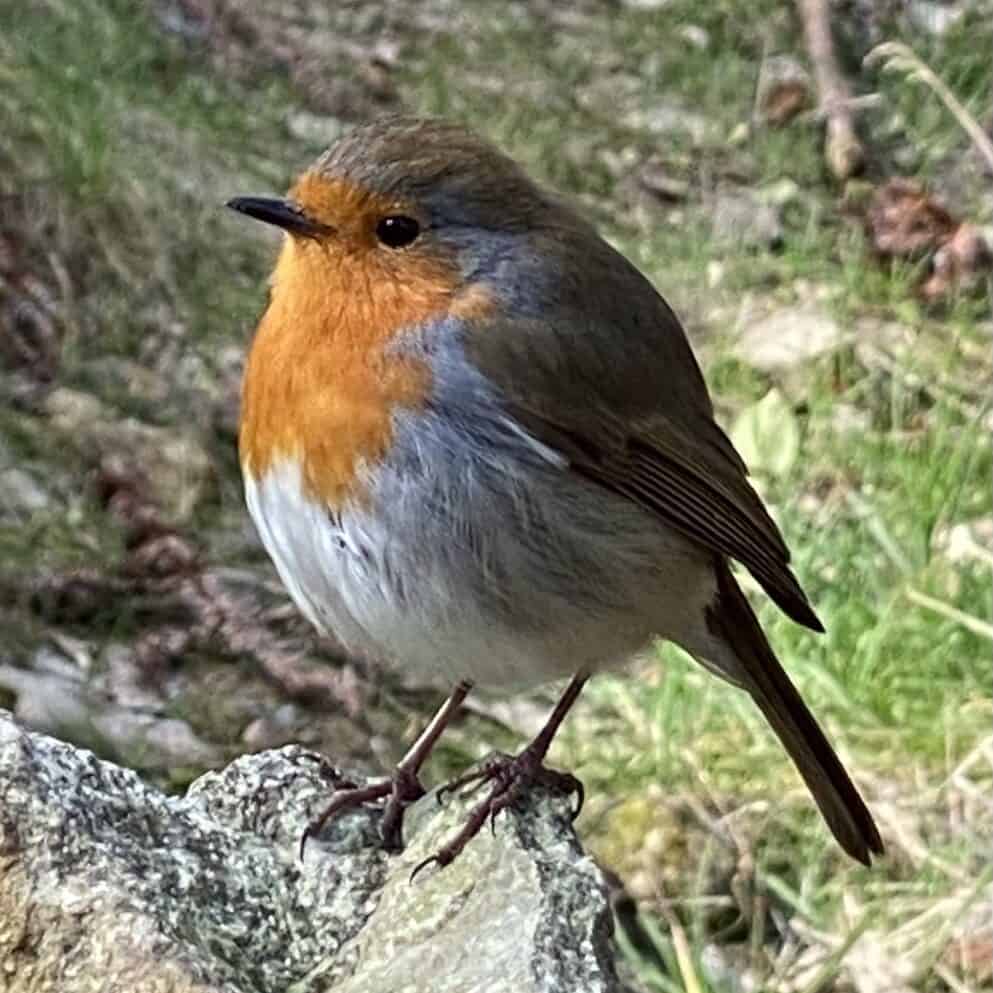
A robin is one of Ireland’s favourite birds, common in both towns and the countryside. They are often seen up close, known for their friendly and social nature, unafraid of people. It’s not surprising that there are different legends about robins in Ireland.
The robin is considered sacred in Ireland, and killing one is considered the worst act one can commit. According to one Irish legend, when Jesus was on the cross, the bird, seeing the crown of thorns pressed on his forehead, took pity on his suffering. With its beak, it removed the most hurtful of thorns, turning its chest red with Christ’s blood. This transformation served as a blessed sign, preserving the robin from harm and ensuring its love from men. Deliberately harming a robin or its blue eggs is believed to bring bad luck.

Another Christian legend suggests that a robin was the childhood friend of Jesus. The bird received its red breast as a reward for protecting the Christ child from sparks of a fire, which it caught on its breast as the holy family traveled to Egypt.
The enchanting tale of how robins acquired their fiery red breast is not confined to Ireland but extends across the Atlantic, resonating in Canada and the US. In this captivating folklore, the robin emerges as a hero, saving mothers, babies, and elderly people from the freezing night.


In the heart of the story, as the robin readies for its morning song and notices the warmth of the fire dwindling near unsuspecting sleeping humans, it fearlessly takes action. Despite the danger and intense heat, the valiant bird uses its delicate wings to fan the smoldering embers, continuously rekindling the flame and shielding the sleeping humans from the biting cold. The glow of the fire gets reflected and imprinted on its breast.
The act of saving innocent souls becomes a testament to the robin’s bravery and unwavering dedication to the well-being of others. As a gesture of gratitude and recognition for its noble deed, the robin is bestowed with a striking red breast, a vibrant badge of honour that sets it apart. The symbolism of the red breast carries echoes of heroism and self-sacrifice, transforming the robin into a living emblem of warmth, protection, and the enduring spirit of those who extend a helping wing, even in the face of adversity. The legend, shared across continents, leaves us with a timeless tale that celebrates the inherent goodness and bravery found in the smallest and most unassuming of creatures.
Interestingly, the North American robin differs greatly in appearance from the Irish robin, having only one thing in common: the red breast. The Irish (or European) robin is a tiny, plump, and long-legged bird with a rich orange-red face and breast, while the American robin is a much larger thrush, characterised by whitish “goggles” around its eyes and a yellow beak.
Did you know that robins navigate using Earth’s magnetic field, using it as a built-in navigation system (“avian GPS”)? In an experiment at the University of Oldenburg, a robin was placed in a cone-shaped capsule with scratch-sensitive paper inside a purpose-built magnetic birdcage. By altering the artificial magnetic field, researchers observed how the robin responded through scratches on the paper. When the robin’s eyes were covered, the magnetic compass was disrupted, suggesting that the robin sensed the weak force of Earth’s magnetic field through its eyes. The conclusion: light particles in the robin’s eyes trigger a chemical reaction. Subtle shifts in Earth’s magnetic field alter the way these electrons in the robin’s eyes are entangled, forming the robin’s magnetic compass.
If you love bird watching you can join our Captivating Wicklow tour which will provide you with an enriching experience as a bird lover.
Leave a Reply